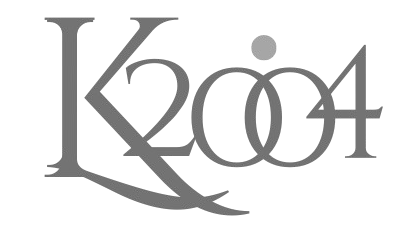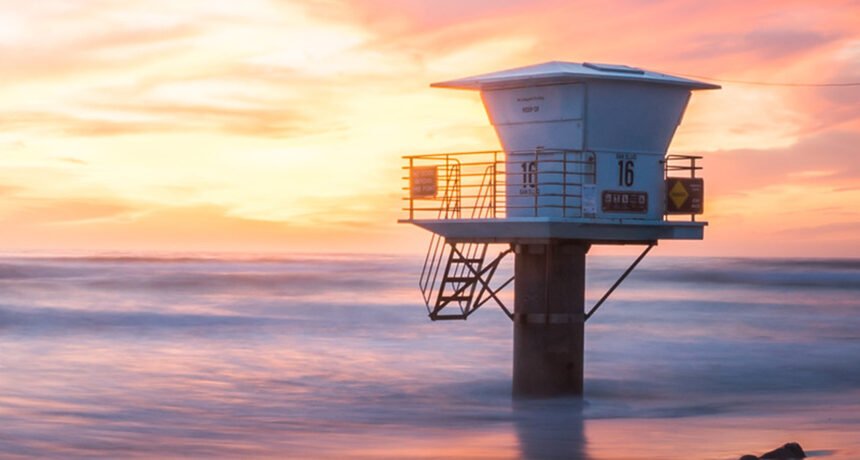Introduction — why Tower 16 matters
Tower 16 is a name that sparks curiosity. It may sound simple, but the story behind it can be rich. Here you will find a clear guide that explains what Tower 16 is, why people care, and how it fits into cities and culture. This article is written so a kid could follow along. Sentences stay short. Ideas stay simple. You will get history, design, engineering, visitor tips, and smart safety notes. I also add easy examples and writing that builds trust. Read on to learn about Tower 16 in an easy, useful way. By the end, you will feel ready to talk about it with friends or plan a visit.
What is Tower 16?
Tower 16 is a modern urban tower concept or project name people use. It can mean a tall office or mixed-use building. It can also be a local landmark or a part of a larger campus. The name has a crisp feel. It is short and easy to remember. In this guide, Tower 16 stands for a single tall building and all the things that go into one. We look at how it is designed, who builds it, and how people use it. If you see Tower 16 on a map or in a plan, this section helps you know what to expect.
History and origins of the idea
Every tower has a back story. Often the story begins in a city plan or a developer’s brief. For a project called Tower 16, the origin might come from a plot number or a program. Architects might pick the number for a reason. It might mark the sixteenth plot in a block. Or it might hint at level sixteen as a key zone. The history also includes how the local council signed off on the build. Old maps, zoning files, and community chats shape a tower’s past. Knowing the origin helps people value the tower more. History gives a building roots in its place.
Design and architecture explained
Design turns a plan into a shape people see and use. Good design starts with simple goals. A building must be safe, useful, and pretty. Designers think about windows, wind flow, and light. They pick the facade material. It might be glass, stone, or mixed panels. For Tower 16, a clean silhouette helps it stand out. Architects also plan public space on the ground. That space can be a plaza or green area. Simple design choices make a tower feel friendly. They also make visitors feel welcome. Smart design blends form with function.
Engineering and construction basics
Engineers turn designs into real, solid structures. They think about foundations, steel, and concrete. They test for wind, quake, and load. Construction teams use cranes, lifts, and careful staging. Tower 16’s build would follow clear steps. First comes site prep and foundations. Then the core and frame go up. Then floors, facade, and finishes follow. Safety checks happen at each stage. Good projects use quality control and clear timelines. Skilled engineers and builders keep people safe and the schedule steady. That care is why a tower stands strong for decades.
Location and urban impact
Where a tower sits shapes its role in a city. A central location can make it a business hub. A riverside spot can make it a scenic anchor. Tower 16’s place affects traffic flow, transit links, and nearby shops. Planners check public transport and parking needs. They also study shadows the tower casts on nearby parks and homes. A tower can give a city new jobs and new visitors. But it can also raise concerns. People worry about congestion and view loss. Good planning balances growth with local needs. That balance keeps the neighborhood healthy and fair.
Visitor experience and the observation deck
Many towers offer places for visitors to enjoy views. An observation deck gives 360-degree sightlines. Visitors like simple features like clear signage and smooth elevators. Tower 16 would aim to make the visit calm and fun. Think easy ticketing, clear maps, and friendly staff. Small touches matter: benches, shaded areas, and family rest zones. For photographers, timing is key. Sunset and early morning give soft light. A good visitor program also includes small exhibits about the building. These exhibits explain design, history, and local stories. That helps guests feel connected and informed.
Safety and sustainability features
Safety is always a core need in tall buildings. Fire alarm systems, sprinklers, and safe stairwells are vital. Engineers also add backup power and clear evacuation plans. For sustainability, towers reduce energy use in many ways. Good towers use efficient HVAC systems and smart lighting. They may have green roofs, water reuse, and solar panels. Tower 16 might aim for energy certification like LEED or similar marks. Sustainable materials help lower the building’s lifetime footprint. Both safety and sustainability protect people and the planet. That care makes a tower trusted and future-ready.
Economic and cultural significance
A tower can shape jobs, rents, and tourism. When a new tower rises, it often brings new offices and shops. That can boost local business. Cultural value grows if the tower hosts events, art, or public spaces. A building named Tower 16 can become a brand. It might appear on postcards and city guides. Planners watch how a tower affects housing and local wages. They aim for growth that benefits residents and small businesses. Good towers support both the economy and the local culture. They can become a proud symbol for a city.
Common myths and misconceptions
Tall buildings carry myths. One myth is that towers always block the sun. That depends on design and placement. Careful orientation and setbacks can limit shadows. Another myth says towers always bring traffic chaos. Smart planning and transport upgrades can reduce that risk. People often think tall towers are only for rich occupants. Mixed-use buildings break that mold. They include shops, public spaces, and affordable units. Tower 16 may face myths like these. The good response is clear data and open community talks. That builds trust and clears up false impressions.
How Tower 16 compares to other towers
Comparing towers helps set expectations. Some towers aim to be the tallest. Others focus on green tech or public spaces. Tower 16 could aim to be compact and efficient. Or it might be a landmark with a striking silhouette. Size, materials, cost, and purpose all matter. A financial tower has different needs than a cultural tower. When you compare, look at metrics like floor area, energy use, and public access. Also consider the social impact on neighbors. A balanced tower blends performance with public value. That balance is what makes a tower stand out for good reasons.
Planning a visit: practical tips
Planning helps make a tower visit smooth and fun. Check opening hours and ticket prices before you go. Weekdays may be less crowded than weekends. Bring a light jacket for windy observation decks. If you want photos, arrive before sunset for warm light. Use public transport if the site has limited parking. Look for accessible routes and family-friendly facilities. Many towers have cafes and gift shops. Budget a break for a drink or snack. These small plans make the visit calm and memorable. Good preparation turns a trip into a great story.
Photography and best photo spots
A tall building offers many photo chances. For rooftop shots, choose the golden hour near sunrise or sunset. For ground-level drama, use nearby plazas or reflecting pools. A clean foreground helps the tower pop. Try different angles and lenses for variety. Wide lenses show the city; mid-range lenses pick detail. For portraits, use the tower as a leading background element. Night shots can be great if the tower has good lighting. Remember to follow local rules about tripods and drones. Responsible photography keeps you safe and respectful to others.
Materials, maintenance, and longevity
A tower’s life depends on smart materials and upkeep. Facade choice affects heat gain and repair needs. Glass walls may need regular cleaning. Stone or metal panels need different care. Roof systems and drainage require routine checks. Good towers schedule maintenance cycles for elevators and fire systems. That care extends the life of the building and keeps people safe. For Tower 16, planners should prepare a durable maintenance plan. A long-term view saves money and protects the investment. It also keeps the building in good shape for the community.
Accessibility and inclusive design
A tower must be welcoming for all people. That means wide entrances, ramps, and accessible elevators. Signage should be clear and use large letters. Restrooms and seating must be accessible. Staff training on inclusion helps visitors feel safe. For family visits, stroller access matters. For older guests, bench spaces and slow elevators help. Inclusive design also helps people with sensory needs. Low-sensory rooms or quiet pathways can be useful. Good towers plan for a range of needs. That kindness makes spaces better for everyone.
Community engagement and local voices
A tower affects its neighbors. Listening to local voices is vital. Town halls and feedback sessions help planners make better choices. Local artists and businesses can be part of the project. That builds goodwill and shared benefit. Project teams should report back on changes and fixes. A community board or liaison can keep dialogue open. Tower 16’s success depends on trust from neighbors and small businesses. Real engagement makes the tower part of the place. It moves a building from a private project to a public asset.
Planning permissions and regulations
Towers must follow many rules. Zoning, building codes, and environmental assessments are key. Planning offices review shadow studies and traffic reports. Fire and safety standards guide design choices. For big towers, public hearings are common. Legal teams and planners work together to meet rules. Transparency helps the approvals process. Clear plans and solid data speed up reviews. Tower 16 would need a full set of permits and studies. Meeting these rules keeps the project lawful and trusted.
Financing and the economics of building
Large towers need strong financial plans. Developers use loans, equity, and pre-leasing to cover costs. Budgets track construction, design, permits, and marketing. Cashflow matters during long builds. Banks and investors want detailed forecasts. A viable exit plan might be to lease floors or sell units. Public-private partnerships help in some cases. Community benefits can be part of financing. A clear plan reduces risk for everyone. Sound economics helps Tower 16 reach completion without surprise costs.
Real-life uses: offices, homes, and mixed use
Towers serve many roles. Some host offices, others house apartments. Mixed-use towers blend retail, work, and living. This mix keeps a building busy at different times. Ground-floor shops help street life. Upper floors offer private spaces and views. Mixed use can lower vacancy risks. It also gives more options for the local market. Tower 16 could be purely business, purely housing, or both. The best choice depends on city needs and demand. A smart mix helps the tower support the neighborhood day and night.
Technology and smart building systems
Modern towers use tech to run smart systems. Building management platforms control HVAC, lighting, and security. Sensors can save energy by adjusting systems in real time. Smart elevators reduce wait times and improve flow. Apps let tenants control services and report issues fast. Data helps managers spot faults before they grow. For Tower 16, a smart system improves comfort and lowers costs. Tech also supports safety with better monitoring and alerts. When used well, smart tech makes buildings more responsive and efficient.
Cultural programming and public events
Towers can host cultural events and exhibitions. A lobby or plaza offers a stage for local music or art shows. Seasonal markets and lectures bring people together. Such programs make the tower a community hub, not just a workplace. Event programming can highlight local artists and makers. That gives small businesses exposure. It also gives residents reasons to visit. Tower 16’s public program can strengthen community bonds. A lively schedule keeps the tower part of everyday local life.
Common repairs and life-cycle costs
Buildings need repair over time. Typical costs include roof work, facade cleaning, and HVAC upgrades. Elevators and safety systems need routine service. Long-term budgets should include renewal funds. Skipping maintenance increases risk and cost later. A life-cycle plan spreads costs and avoids surprises. Good budgets plan for replacement of major systems every decade or two. For Tower 16, long-term financial planning helps keep the building healthy and usable for many years.
Conclusion — your next steps and how to stay involved
Tower 16 shows how one building can touch many parts of a city. It links design, engineering, finance, and community life. If you care about a local tower, join public meetings. Read planning documents and ask simple questions. If you plan to visit, pick a quiet weekday and check times online. Share photos and stories with neighbors to build friendly memories. A tower is more than glass and steel. It is a place where people meet, work, and gather. Stay curious, ask good questions, and help shape how a tower serves the city.
FAQs about Tower 16
Q1: Is Tower 16 open to the public?
Public access varies by project and owner rules. Some towers offer public lobbies, plazas, or observation decks. Others keep most floors private for tenants. Check the tower’s official site or local visitor info. If the building has an observation deck or events, the site will list hours and tickets. Public features help a tower connect with the city. They give locals and tourists places to gather and learn about the building’s story.
Q2: How safe are tall towers like Tower 16?
Modern towers are very safe when built and managed correctly. They follow strict building codes and fire rules. Regular inspections and trained staff add safety. Features include alarms, sprinklers, and clear evacuation routes. Backup power helps essential systems run in an outage. Good towers also maintain elevators and security systems. Safety is a top priority for developers, engineers, and managers.
Q3: What sustainability features might Tower 16 include?
Towers often include energy-efficient lights and heating systems. They may use better insulation, water-saving fixtures, and recycled materials. Some have green roofs or solar panels. Smart sensors cut wasted energy. Certifications like LEED show green performance. Sustainable choices save money over time. They also reduce environmental harm. These features help the tower be kinder to the planet.
Q4: How long does it take to build a tower like Tower 16?
Build time varies a lot. Small towers may take a year or two. Large projects can take three to five years or more. Time depends on size, site work, permits, and weather. Early stages include approvals and detailed design. Construction follows with foundations, frame, and finishes. Delays can occur, so good planning helps keep things on track. Clear scheduling and good contractors speed progress.
Q5: Can local people influence Tower 16’s design?
Yes, local voices often shape a tower’s outcome. Planners may hold public meetings and hearings. Community feedback can change materials, ground-floor use, and public spaces. Local artists and groups may be invited to add work or programs. Early and open dialogue helps make the tower fit the place. Developers who listen usually build better relations with neighbors.
Q6: What are good tips for photographing Tower 16?
Find wide or reflective foregrounds to make the tower pop. Shoot in the golden hour for warm light and soft shadows. Try night shots if the tower has attractive lighting. Use different angles and distances to vary your shots. Respect signs about tripods and drone rules. Keep people’s privacy in mind. With practice, you can create images that show both the tower and the life around it.







